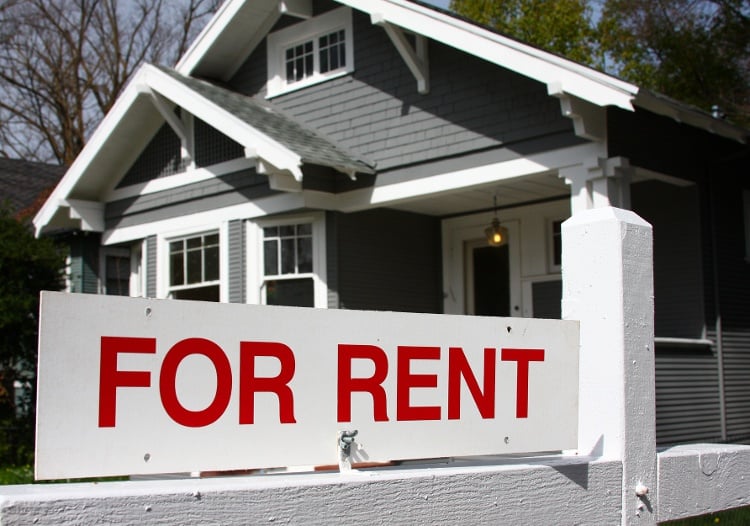Buying rental property in the same place where you live isn’t always the most profitable option for real estate investing.
Many markets today have housing prices that are astronomically high, making it almost impossible to get started in real estate. That’s why owning out of state rental property is becoming an increasingly popular choice for savvy investors.
In this article we’ll discuss the pros and cons of investing out of state, and where to find the best rental property to match your investment goals.
Why invest in rental property out of state?
There are four key reasons why investors purchase rental property out of state:
- Invest in geographic areas with population and job growth is strong
- Diversify a rental property portfolio with markets that best match your investment strategy
- Focus on the type of returns you’re looking for, such as maximum cash flow, high appreciation, or total yield over the targeted holding period
- Operating expenses are lower in markets with fewer regulations, lower property taxes, and landlord-friendly laws

Advantages of owning out of state rental property
There are some real estate investors who swear by the 30-minute rule.
The rule states that you shouldn’t buy a property unless it’s within a 30-minute drive of your office or home. This way, you can easily check up on the property and tenants without wasting a lot of valuable time.
That might be a good idea if you live in an area where great rental property deals are plentiful. But, if you’re in a real estate market where prices are high and returns are low, the 30-minute rule could wreak havoc on the financial performance of your rental property portfolio.
Over the last several years, investing in out of state rental property has become easier and more profitable. Here are some of the top advantages to being a long-distance real estate investor:
1. Rental property is more affordable
Successful real estate investors know that money is made when the property is purchased, not when it’s sold.
If you try to invest in a market where housing prices have been increasing by big percentages year over year, the odds are that at some point the market is going to trend downward. That’s not being pessimistic, it’s simply that way normal real estate market cycles work.
Investing in a smaller secondary market where rental properties are cheaper gives you more of an equity cushion in case prices go down. Affordable houses also offer the opportunity for better returns from the minute you take possession of your property.
2. Potential returns are greaterThere are two major financial benefits out of state rental property can provide:
- Cash flow is higher when you can afford to make a bigger down payment. Let’s say you have $25,000 to invest. Your LTV will be more conservative and your revenue stream stronger with lower debt service when you buy in a market where house prices are $100,000 versus $200,000 or more in a high-cost area.
- ROI is greater when you invest in out of state markets that make sense. Buying rental property in undervalued markets where population and job growth is strong can create significant appreciation in market value over the longer term. Your return on investment is magnified with a one-two punch of healthy cash flow plus increased equity from appreciation.
Location has a major impact on your investment strategy for rental property.
For example, family-friendly suburban submarkets and some urban neighborhoods are perfect for single-family houses. On the other hand, densely populated mixed-use districts where people live, work and play are more attractive to millennials and singles willing to pay a higher rent for a smaller place.
Before researching out of state markets to buy rental property in, it’s important to know what your preferred investment strategy is to understand what you’re looking for.
4. Minimize risk with diversificationDiversifying an investment portfolio is a key strategy used to reduce risk.
That’s why many investors focused on the high-tech sector buy shares in the NASDAQ-100 – an ETF with a heavy focus on tech and biotech innovators – instead of buying stock in individual companies.
Minimizing real estate investment risk with diversification works the same way.
Instead of trying to choose the single best rental property in only one market, successful investors seek to minimize risk and maximize reward by holding one or two properties in the right out of state real estate markets.

Drawbacks to out of state rental property
One of the biggest challenges to buying rental property out of state is committing to taking the time and effort to understand the market. While the potential profits may be greater, there’s also a larger learning curve to investing outside of your home market.
Here are a few possible drawbacks to out of state rental property, and how to avoid making a big mistake:
1. Skipping due diligence and buying property sight unseen
To avoid one of the biggest mistakes that out of state rental property investors make, conduct in-depth research online and work with a local investor-savvy real estate agent and property management company to assist with your due diligence and property inspection.
Long-distance real estate investors are buying rental property for the income it produces. That’s why they focus on turnkey rental houses and small multi-family investments. When the property is already occupied, cash flow from turnkey rental property begins the day escrow closes.
3. Unfamiliar with landlord-tenant rules, local laws, and customsSome markets have laws that are heavily in favor of the tenant.
While the demand for rental property may be strong in these places, rules and regulations that side with renters can end up limiting ROI and cash flow. Thoroughly research local laws and market customs by talking to property managers and joining local investor groups to learn what the real estate market is really like.

Where to look for out of state rental property
There are several ways to find the best out of state rental property that’s right for your investment strategy. Three of the most popular resources are:
1. Local MLS
There are literally hundreds of different MLSs (multiple listing services) in real estate markets across the U.S., each with its own unique inventory of listings and data.
Speaking with local real estate agents who work with out of state investors is a great way to learn about the pros and cons of the local marketplace. Keep in mind that the best agents may already have an established client base, so its a good idea to know what you’re looking for to make the most of their help.
2. Zillow
Housing data from Zillow Research is perfect for investors who like to take a deep-dive into detailed real estate market statistics. Zillow offers three data sets from the macro U.S. level all the way down to neighborhood and zip code information:
- Zillow Home Value Index (ZHVI) provides a seasonally adjusted measure of typical home value and market trends based on region and housing type
- Zillow Rent Index (ZRI) provides an estimated market rate rent based on region and housing type
- Zillow Inventory and Sales reports provide data on sold homes, sales counts, median sale price, and median price reduction during the listing period
The Roofstock Investment Property Marketplace is another option to shop for single-family rental houses, small multifamily property, and ready-to-go rental property portfolios.
Each property available for sale includes detailed photos, existing lease information, neighborhood and school ratings, and an in-depth customized financial analysis with key performance statistic including:
- Current and estimated rent
- Cap rate
- Gross yield
- Cash flow
- Appreciation
- Annualized return
- Total return
Tips for buying out of state rental property
The system for buying out of state rental property varies from one investor to the next, so there’s no one-size-fits-all formula to follow.
However, while even though goals and investment strategies are different, there are some general guidelines to consider before investing in rentals that are out of your home state:
- Look for markets with vibrant economies, strong population and job growth, and low unemployment rates
- Use the free rental property analyzer in this article to forecast the potential return of a property. Simply enter some information to view projected key return on investment (ROI) metrics, including cash flow, cash-on-cash return, net operating income, and cap rate.
- Minimize risk by investing in a pre-inspected, turnkey rental property with a tenant in place to earn cash flow beginning the day the deal closes
- Begin the loan application process early, because sometimes lenders require more paperwork than when you’re financing in your home state
- Hire a good local property manager who has experience working with out of state investors
Final Thoughts
While buying out of state rental property does come with some risk, investing the right way helps to minimize those risk while maximizing the overall returns of your property portfolio:
- Key reasons for investing out of state include increasing cash flow and portfolio diversification.
- Affordability, matching markets with investment strategy, and property affordability are three advantages to buying real estate out of state.
- Turnkey rental property and a local property manager help to reduce the risk of investing outside of your home state.
- Three of the best places to find out of state rental property are the local MLS, Zillow, and Roofstock.









